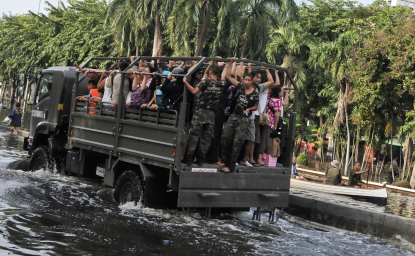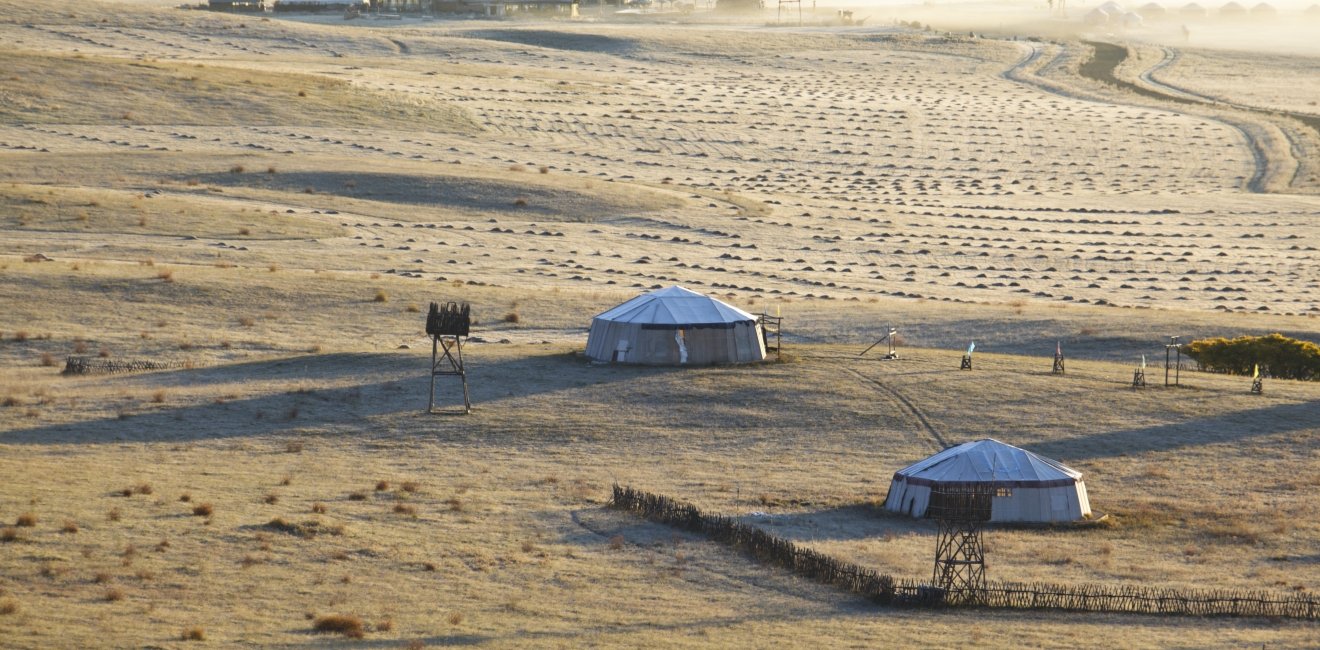Summary
Powerful states compete and cooperate to shape the rules and institutions of international order. How will the growing effects of climate change affect that behavior? To date, most analysts of security and economic competition have only fitfully or partially incorporated the most up-to-date understandings of climate change into their analysis. I identify three different ways that various analysts of strategy and order think about climate change. The first, “threat multiplier,” is most familiar to the U.S. Defense Department, and focuses on how climate change creates increased probability of civil wars, forced migration, political violence, and infrastructure damage. The second, “issue tradeoffs,” imagines climate change as an issue area, and one that creates instrumental tradeoffs with other military and economic priorities, such as when the Obama administration in 2014 reportedly delayed a Freedom of Navigation Operation (FONOP) in the South China Sea in exchange for Chinese support for the Paris Agreement. The third, “altered landscape,” sees climate change not as an issue area at all, but as a pervasive background condition that is intrinsically connected to most other areas of interstate competition and cooperation. In this view, actors have climate-related incentives and opportunities in each conventional issue area, like carbon tariffs in international trade or development finance for overseas energy projects. Each of these three ways of conceiving the climate-and-order nexus is fruitful and imperfect, but the third is the least understood and deserves the most attention.
Introduction
Scholars of international relations have multiple definitions of “international order,” but a common one is that international order consists of the governing arrangements among a group of states, including its fundamental rules, principles, and institutions. Institutions like the United Nations, World Trade Organization (WTO), International Monetary Fund, and North Atlantic Treaty Organization (NATO) are manifestations and servants of those governing arrangements. Climate change is one of several challenges to the existing international order, often called the liberal order. For example, as countries develop pro-climate policies at different speeds and magnitudes, they will have incentives to diverge from existing arrangements over trade and economic integration. The WTO has already ruled against several countries’ environmental policies, and the EU’s recently proposed carbon border adjustment mechanism could lead to more challenges.
To date, three different modes of thinking about climate change have shaped the analysis of strategy and international order: “threat multiplier,” “issue tradeoffs,” and “altered landscape.” None of these modes of thinking is fundamentally “right” or superior to the others in all cases. But in today’s context and current understanding of climate impacts, the “altered landscape” approach provides the best opportunity to break up bureaucratic inertia and conventional patterns of U.S. action, providing a more strategic way to think about U.S. interests, opportunities, and strategy in light of climate change.
One of President Biden’s first Executive Orders directed each department and agency of the United States government to formulate a climate action plan, and to better incorporate climate change into its thinking and functional processes. In doing so, climate-informed analyses and future scenarios should consider not just new threats or tradeoffs, but the whole landscape of new opportunities and incentives that might disrupt existing governing arrangements. If I were advising the State Department about how to create such a plan, for example, I would encourage each regional and functional bureau to conduct a SWOT (Strengths-Weaknesses-Opportunities-Threats) analysis of how climate change affects their realm.
Three Modes of Climate Thinking
Three different modes of thinking about climate change have shaped the analysis of strategy and international order. The first sees climate change as a “threat multiplier.” This view is most common at the U.S. Department of Defense, where climate change has long been seen as a reality that shapes the military’s missions. The “threat multiplier” view focuses on how climate change creates increased probability of civil wars, political violence, and infrastructure damage. Many analysts argue, for instance, that the Syrian civil war that began in 2011 was partly caused by the years of drought and agricultural stresses in the years that preceded it.
Threat Multiplier
The “threat multiplier” mode of thinking, which emerged in the early 2000s, was a useful entry point for helping to highlight the buckshot-spray of knock-on effects that climate change will create and at which we can only guess right now. For example, MIT scientists forecast that the North China Plain, currently home to 400 million people, will be virtually uninhabitable within a few decades, because of the combination of extreme heat and humidity that is lethal even to young, healthy people sitting in the shade. Massive investments in air conditioning and environmental adaptation might allow some of those people to remain in the area, but realistically, many millions will move or die. Either option creates a massive source of political instability in the heart of East Asia. Similar extreme weather conditions will affect South Asia, the Persian Gulf Region, and parts of Africa. A 2020 study finds that between 1 and 3 billion people are projected to be left outside the normal range of conditions habitable for human beings. We do not know what problems migration and death on this scale will cause because we have no real precedent for them. At best, we have some flawed historical analogies, and none of them are pretty. Thus, the threat multiplier mode of thinking was a good start—but it is incomplete, as the next two modes of thinking suggest.
Issue Tradeoffs
The second mode of thinking, which I label “issue tradeoffs,” imagines climate change as an issue area, and one that might create instrumental tradeoffs with other military, diplomatic, and economic priorities. For instance, the Obama administration in 2014 reportedly delayed a Freedom of Navigation Operation in the South China Sea to facilitate Chinese support for the Paris Agreement. Seen this way, climate change is a cooperation problem (perhaps even a collective action problem), where the central goal is to reduce greenhouse gas (GHG) emissions and ultimately decarbonize the global economy. Cooperation between countries might stimulate research, development, and implementation of clean energy technology or negative emissions technology, for example. It might also be useful in coordinating technical standards and generating political pressure for more ambitious mitigation targets. We should be realistic, though, about the limits of international diplomacy to produce meaningful decarbonization, as policy failures like the 1997 Kyoto Protocol illustrate.
A variant of the “issue tradeoffs” mode of thinking is to see climate change as an issue area but deny that there are policy tradeoffs with other issues. In effect, the claim here is climate change should be hived off from all other diplomatic issues between countries, unaffected by differences on other issues like economic integration or human rights. The Biden administration sometimes gives voice to this view. U.S. Special Envoy for Climate Change John Kerry argued, “obviously we have serious differences with China,” citing Beijing’s theft of intellectual property and aggression in the South China Sea as examples, but that “those issues will never be traded for anything that has to do with climate. That’s not going to happen.”
In practice, it might not be so easy to isolate decarbonization from tradeoffs with other policy issues. After Secretary of State Antony Blinken criticized the Chinese government on human rights issues in Xinjang, a Chinese government account tweeted: “China is willing to work with the US on climate change. But such cooperation cannot stand unaffected by the overall China-US relations. It is impossible to ask for China’s support in global affairs while interfering in its domestic affairs and undermining its interests.” Moreover, even if the Chinese choose not to overtly link cooperation on climate change to other issues, the reality is that diplomats must choose which issues to put at the top of the agenda in any given relationship, and that choice is a zero-sum game. If climate change is at the top, other things must fall farther down the agenda.
Altered Landscapes
The third mode of thinking, “altered landscape,” sees climate change not as an issue area at all, but as a pervasive background condition that is intrinsically connected to most other areas of interstate competition and cooperation. Climate change could or will affect humanitarian challenges, development finance, global supply chains, interstate alliances, and much else. Diplomats and analysts trying to get a handle on these manifold effects should think about them across two dimensions. The first dimension is novelty, ranging from how climate change would affect existing governing arrangements or behaviors to, at the other end of the spectrum, how climate change would create new situations that are unprecedented. The second dimension is substantive type, which falls basically into two categories: economic flows and non-economic matters. Those two dimensions create four categories, which might be considered by an analyst of any geographic region (e.g., the Middle East) or functional area (e.g., human rights and democracy).
Some examples illustrate the dimensions of this altered landscape. Consider the first category, existing arrangements for economic flows. Climate change will disrupt trade routes, commodity consumption, and energy flows. The United States has, for example, some longstanding relationships with countries in the Persian Gulf region, notably Saudi Arabia, Kuwait, Qatar, and the UAE, that are often characterized as “oil-for-security” deals. Those bilateral relationships are about more than just oil, of course, and the world’s demand for oil will not disappear overnight. Even so, it seems likely that the global energy transition away from fossil fuels will eventually undermine the basic premises of the U.S. relationships with those countries. Moreover, the anticipation of that future could affect regional dynamics now or in the near future, as petrostates begin to reassess how best to guarantee their military security in a world where the United States is less invested in their sovereignty. From the U.S. perspective, retrenchment from the Persian Gulf due to declining global demand for oil might be a climate-related opportunity, but it also creates threats. The State Department should conduct SWOT analyses with those opportunities and threats in mind – as just one of several changes that climate change will bring for the Persian Gulf region.
In this first category, a second example of existing arrangements for economic flows is the macroeconomic coordination conducted by central banks, which has an important international dimension to it. Climate change creates multiple risks for the stability of the financial system, including physical, litigation, and transition risks. Those risks affect a deeply interconnected global system. As historian Adam Tooze showed in his history of the 2008 financial crisis, the U.S. Federal Reserve was forced to act not only on the threats facing the U.S. economy, but also on the threats to European and global financial stability. There are various international governing arrangements, like the Financial Stability Board, the Bank for International Settlements, and the Basel Committee on Banking Supervision. Policymakers in all of those institutions are gradually waking up to the threat posed by climate change to financial stability, and are taking (inconsistent, widely divergent) actions in response to that threat.
The second category is new situations for economic flows. Two examples come immediately to mind. One is the possibility of a new Arctic shipping route from Asia to Europe that passes mainly through Russian seas. Russia is becoming increasingly assertive in the Arctic, and the implications of that assertiveness for U.S. interests need to be analyzed on an ongoing basis. A second example is the growing concern actors have about global supply chains for batteries, particularly in connection to electric vehicles (EVs). Much of the raw materials for such batteries are mined or refined in China, which might decide to use that market structure to its advantage for political or commercial purposes. Hence, there is growing interest in a new U.S.-Canada initiative to create mining and refining capacity for key materials like nickel and cobalt in Canadian territory. Again, the State Department should conduct SWOT analyses with those opportunities and threats in mind.
In the third category—existing arrangements over non-economic issues—analysts should consider how national borders, military bases, and various pollutants are all being moved or degraded by climate change. Some borders are based on the location of rivers or glaciers, which climate change is moving. Military bases, especially naval bases, have infrastructure that are affected by rising seas or increased storms. Some of my own work shows how climate change is mobilizing radioactive and toxic pollutants in unexpected ways. For example, my research shows how the United States might face new diplomatic frictions or legal threats as Denmark and Greenland reckon with the future cost of cleaning up pollutants left by the U.S. military at Camp Century, an abandoned military base in Greenland—that is, frozen pollutants that climate change threatens to mobilize in hazardous ways.
Finally, in the fourth category, new situations involving non-economic issues, a whole variety of unknowns exist. Climate-related human migration is one of the most alarming. A study by the New York Times indicates that up to 30 million climate migrants from Central America could show up on the southern U.S. border by 2050. While immigration at moderate levels is typically beneficial to both the migrant and the recipient country, large waves of immigration can be political destabilizing, as seen in Europe in the wake of the Syrian civil war. Moreover, migration can create other problems for international relations. Countries like Turkey and Morocco have recently shown how migration can be weaponized by sending or transit countries that selectively enforce border protections, in order to extract political concessions from receiving countries in the EU. It is not inconceivable that Mexico or Cuba might consider weaponized migration tactics against the United States in the future. Even if they did not, Mexico and Central American countries are likely to call upon the United States for economic assistance to reduce the causes of such climate-related mass migrations. The U.S. government should have a strategy about how to address such requests, and to use any US resources thus allocated wisely.
Figure 1 plots these examples of climate change effects according to the two dimensions identified earlier—novelty and substantive type. These examples are meant to be illustrative rather than comprehensive. Indeed, the examples probably only scratch the surface of the many different ways climate change will create new political challenges in the future. The framework in Figure 1, however, might help analysts foresee some of the possibilities.
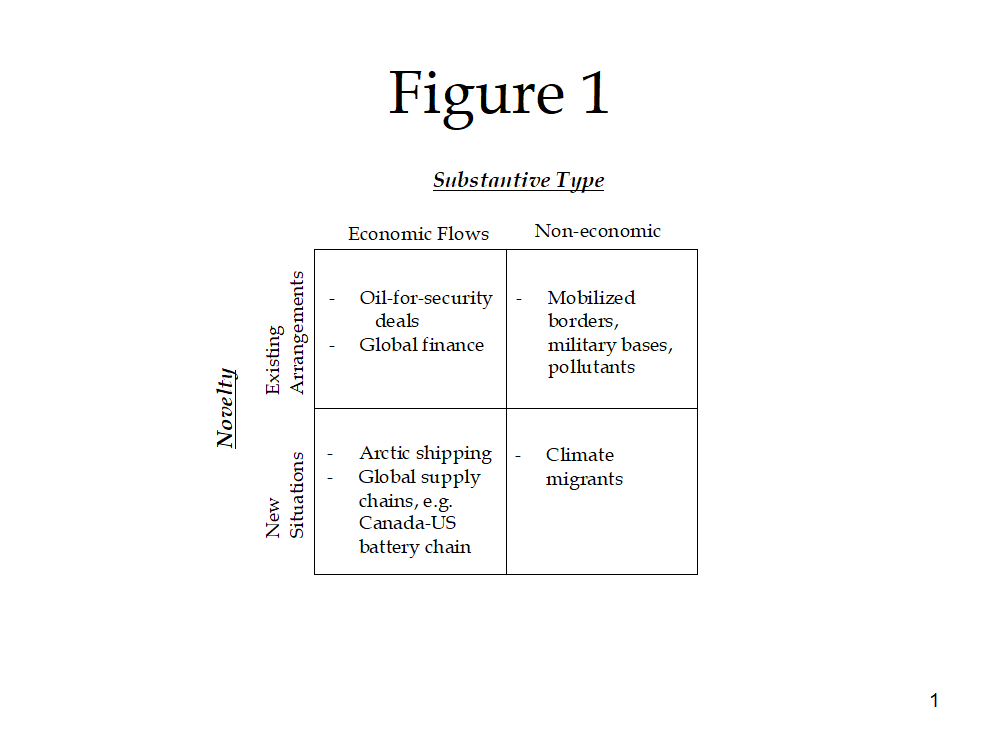
Conclusion
There is no easy recipe for thinking about the new problems, new incentives, new strengths, and new weaknesses that climate change will bring to almost every area of world politics. Gradually, analysts and scholars have been developing increasingly effective frameworks. I highlighted three in this memo: threat multiplier, issue tradeoffs, and altered landscape. Each of these three ways of conceiving the climate-and-order nexus is both fruitful and imperfect, but the third is the least understood and deserves the most attention. Climate change as reshaping everything from finance to trade politics to nuclear proliferation, leaving few if any “non-climate” issues that can be understood without reference to this new strategic landscape.
Sources:
Financial Times, Global Environmental Politics, Nature, Nature Communications, New York Times Magazine, Penguin Random House, Princeton University Press, Proceedings of the National Academy of Sciences of the United States of America, United States White House, United States Department of Defense, Vox, Wall Street Journal
Author

Richard Holbrooke Associate Professor of Political Science, Brown University

Environmental Change and Security Program
The Environmental Change and Security Program (ECSP) explores the connections between environmental change, health, and population dynamics and their links to conflict, human insecurity, and foreign policy. Read more

Explore More
Browse Insights & Analysis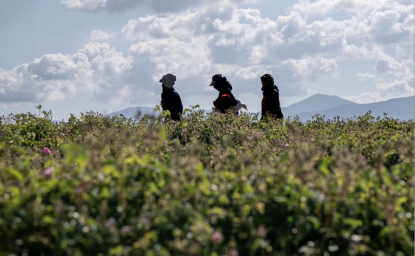
Can Climate-Resilient Agriculture Become an Engine for Syria’s Post-Conflict Recovery?
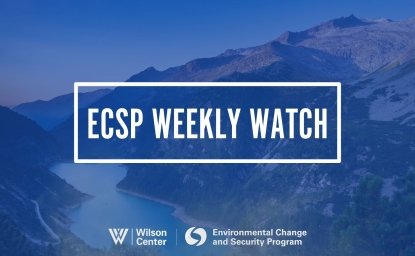
ECSP Weekly Watch | March 10 – 14

ECSP Weekly Watch | February 17 – 21
